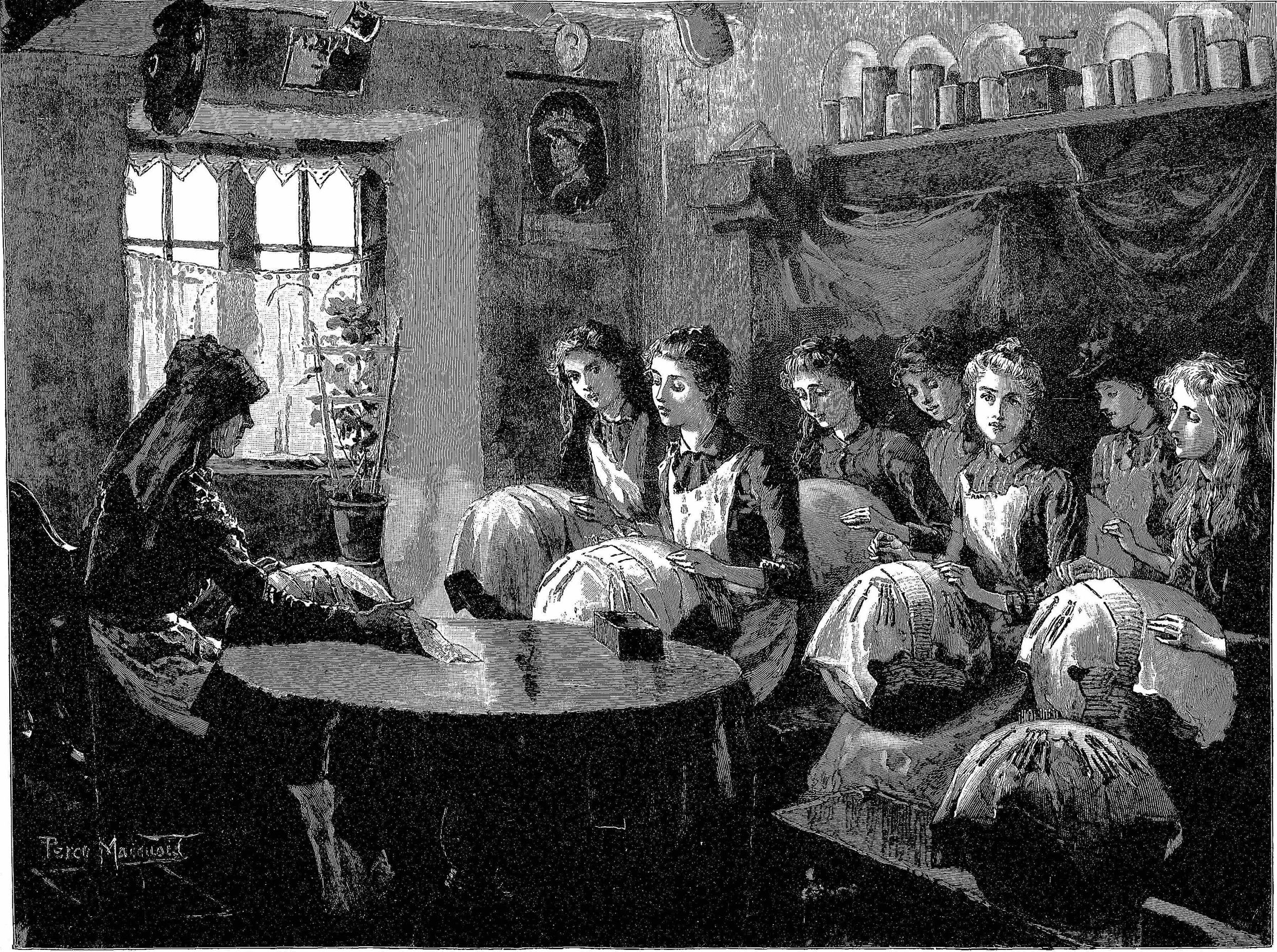This article was written and illustrated by Percy Macquoid (1852-1925), and appeared in The Graphic on the 9 January, 1892. Thanks again to the British Newspaper Archive for this find. Macquoid, whose father was also an artist and illustrator (and whose mother a popular novelist and travel writer), was a regular contributor to The Graphic but also worked as a theatre designer. He is best known now as a collector and connoisseur of English furniture, having written several of the key texts on this subject. Here he shows his concern for another “art industry” in decline, Honiton lace. Reports of this kind helped stimulate the lace revival around the turn of the century. However, we have included it on this site because Macquoid provides a very rare image of the inside of a lace school.
The illustration represents a school for the manufacture of Honiton lace. A few years ago these schools were found in every village in the neighbourhood of Honiton. Now they are all but extinct, and where the little girls of a village were universally apprenticed to the trade, and dependent on it for their livelihood, now these same villages are more or less deserted and the young women obliged to go out to service. One of the chief reasons for this is the decay of the Honiton lace trade, owing to the demand for only the very cheap and ordinary kind. Hence the girls were no longer apprenticed to the schools for teaching the fine and elaborate stiches, and, as it is requisite to begin very young, the real art of the manufacture is now quickly dying out. Formerly the girls were apprenticed when children to any old woman of the village who was a skilled worker, and she instruct them in the various stiches, taking for payment the work they manufactured. Much greater aptitude is often shown by the girls of one family, proving it to be a transmitted art, and some of the bobbins in use now are over 150 years old, being much prized, and having been handed down from mother to daughter. Very few of the old skilled workers can now afford to keep such schools. They will tell you that there is practically no demand for the really fine Honiton, and that there are very few workers now left who can make it. The accompanying photograph shows what these old hands can still do. The thread was obtained from Belgium. A piece of fine early eighteenth century English lace was given by me as a pattern, and was exactly reproduced by one of the old skilled workers in the cottage in the illustration.
It seems a hard thing that one of the few thriving Art industries of England should utterly die out, as it soon must, for the art will die with the old workers. The young girls are merely taught the ordinary coarse stitches, as there is only demand for this kind of lace now, and even this demand is gradually decreasing, and the work in consequence less and less good, and so, unless prompt encouragement is given, the art must irretrievably die out.









Leave a Reply